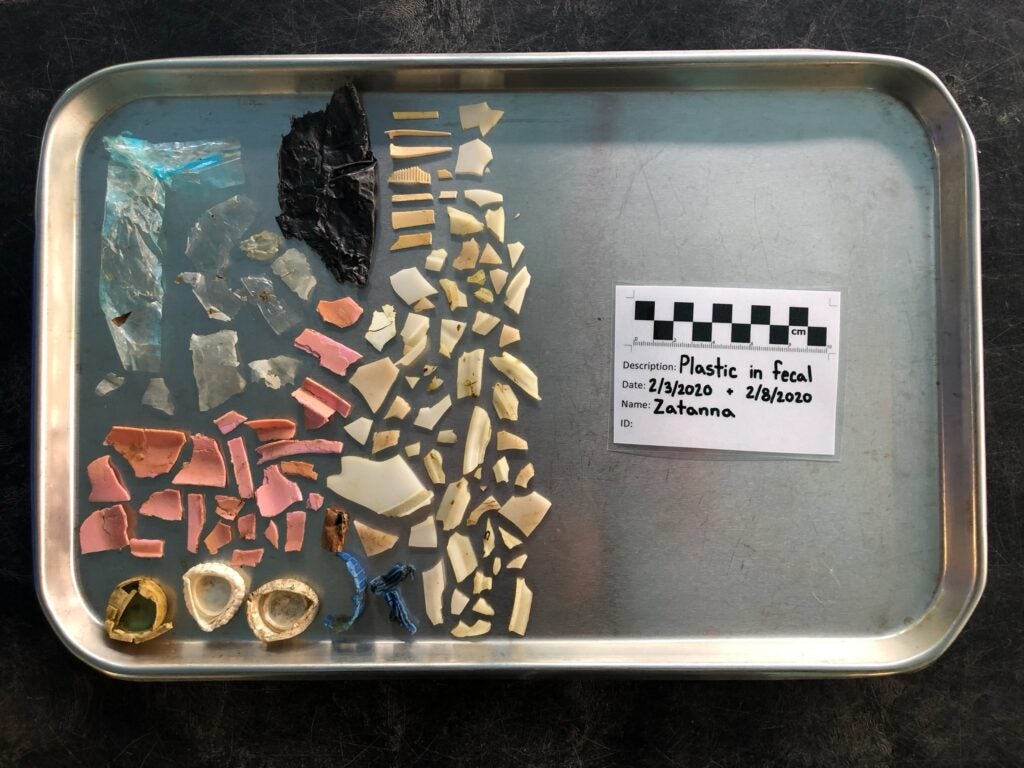October 12, 2022
Ask Dr. Pauly: Why are plastics in the ocean so harmful?
BY: Daniel Pauly

Dr. Daniel Pauly is the founder and principal investigator of the Sea Around Us project at the University of British Columbia’s Institute for the Oceans and Fisheries, as well as an Oceana Board Member.
Until the 1950s, the animals on Earth, including marine animals, primarily only had to deal with debris and trash in the form of organic substances or objects that were produced by, or derived from, plants or animals. This included wood, fiber, rotting flesh, bones, or other materials that could be degraded by bacteria and fungi, and thus turned back into nutrients or converted into harmless minerals. For eons, these microscopic organisms recycled organic matter on Earth and in our oceans, and quite literally kept our world clean.
This changed radically with the advent of plastics. Chemists consider plastics “organic” because, like most living substances, they consist of chains of carbon atoms. However, most plastics are petroleum-derived, made from long chains of carbon atoms which have shapes bacteria never encountered in their 3 billion years of existence. Thus, every piece of plastic we throw away, from plastic bags to disposable razors to empty detergent bottles, could remain with us for centuries or longer.
Plastics can’t be burned safely because some of their carbon chains, under high temperatures, link up and form Frankenstein compounds, such as dioxins, which are highly toxic to all life, including humans[i]. And most plastics cannot safely be recycled because of the thousands of added chemicals – many of which are toxic and make their way into recycled products.[ii]
Thus, while you can recycle aluminum infinitely, you can only downcycle plastics, i.e., turn high-quality plastics, like the ones used to make disposable spoons, into low-quality plastics, like the kind used to make park benches (and we don’t need that many park benches).
However, it is far more likely that plastic waste will end up in a landfill or in the environment, including ocean ecosystems[iii]. And when dealing with the oceans, it is useful to distinguish between two kinds of plastic pollutants: macro- and microplastics.
Macroplastics make up the junk that we see floating at or near the surface of the sea, where they have formed gigantic and steadily increasing “garbage patches” in the Atlantic, Indian, and Pacific oceans. This form of pollution is a growing threat to seabirds, sea turtles, whales, and other marine mammals because they may mistake macroplastics for food items and die in agony with bellies full of bulking, indigestible trash[iv].

These animals can also entangle themselves in floating pieces of plastics and drown. In other cases, they can end up with rings of plastic around their necks or bodies, which grotesquely maim them and cause immense suffering until they die of their suppurating wounds.
Even worse, because they are more insidious, are microplastics. These are tiny, often barely visible bits of plastic — like the ones shed from clothing in washing machines — which can now be found in all the world’s seas.
To fully understand what microplastics do, we must appreciate another nasty property of long carbon chains: They make plastic lipophilic, which is a jargony way of saying plastics repel water (which is the reason why we make rain jackets with plastic fibers).
Now, it so happens that most of the worst poisons that the chemical industry produces — DDT, PCB, dioxins, etc. — happen to be lipophilic as well.
Thus, every bit of microplastic in the ocean acts as a minuscule sponge for the various poisons that the chemical and energy industries have disposed of via waterways or the air, and which have ended up in the sea, where they now accumulate.
So these chemicals stick to microfibers, turning them into tiny poison pills that end up being consumed by small, insect-like animals called zooplankton, which store lipophilic substances in the fat of their little bodies[v]. This is called bioaccumulation. Zooplankton are then consumed by small fish such as sardines and anchovies, which are then eaten by tuna and then … bon appétit!
This is why we must de-plastify the world, starting with the absurd waste that single-use plastic containers and utensils represent.
[i] https://www.sciencedirect.com/science/article/pii/S187802961630158X
[ii] https://ipen.org/documents/plastics-toxic-additives-and-circular-economy
[iii]https://www.science.org/doi/10.1126/sciadv.1700782#:~:text=We%20estimate%20that%208300%20million,landfills%20or%20the%20natural%20environment
[iv] https://usa.oceana.org/reports/choked-strangled-drowned-plastics-crisis-unfolding-our-oceans/
[v] https://www.sciencedirect.com/science/article/abs/pii/S0025326X12005942



